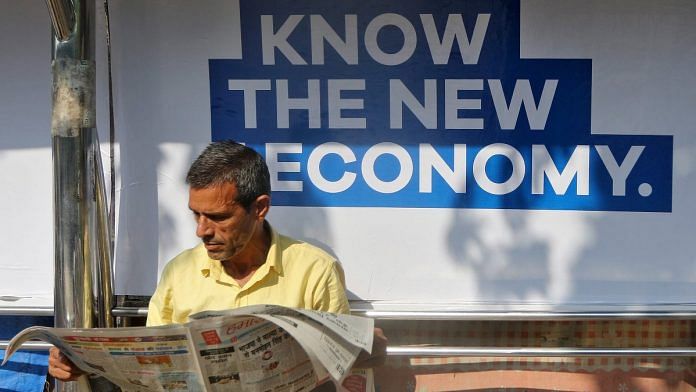New Delhi: India on Tuesday forecast its economy would grow 6% to 6.8% in the coming financial year, slower than the projected pace for 2022/23 because of likely damage to exports from a global slowdown.
The forecast in the government’s annual Economic Survey report is higher than the International Monetary Fund’s projection of 6.1%, because the report’s finance ministry authors expect strong domestic demand to partly offset global weakness.
The report has been issued, as usual, one day before the government presents its budget for the coming financial year.
It said that, in its baseline scenario, gross domestic product (GDP) would be 6.5% higher in 2023/24 than in 2022/23. That would make India’s economy one of the fastest growing in the world. The financial year begins on April 1.
“The actual outcome for real GDP growth will probably lie in the range of 6.0% to 6.8%, depending on the trajectory of economic and political developments globally,” it said.
The government has estimated GDP would be 7% higher in 2022/23 than last financial year, when the economy showed growth of 8.7%.
The survey, tabled by Finance Minister Nirmala Sitharaman in parliament ahead of the annual budget on Wednesday, is mainly a review of how the economy fared in the past year.
The economy has rebounded since the COVID-19 pandemic. But the Russia-Ukraine conflict has triggered inflationary pressures and prompted central banks, including India’s, to reverse ultra-loose monetary policy adopted during the pandemic.
The survey said inflation was not high enough to deter private consumption nor low enough to weaken investment, even though it remained above the central bank’s target range of 2% to 6% in 2022/23.
Consumer prices in December were 5.72% higher than a year earlier.
The survey said the current account deficit might stay high, because a strong local economy would support imports while exports eased due to weakness in the global economy.
India’s current account deficit was 4.4% of GDP in the July-September quarter, higher than the 2.2% of the previous quarter and the 1.3% of a year earlier. Rising commodity prices and a weak rupee caused it to widen.
(Additional reporting Aftab Ahmed; Additional reporting by Nigam Prusty; Editing by Tom Hogue and Bradley Perrett)
Disclaimer: This report is auto generated from the Reuters news service. ThePrint holds no responsibilty for its content.
Also read: Budget 2023: Modi govt on track on 2022 capex promises, states lag. Punjab, Bihar repeat offenders






